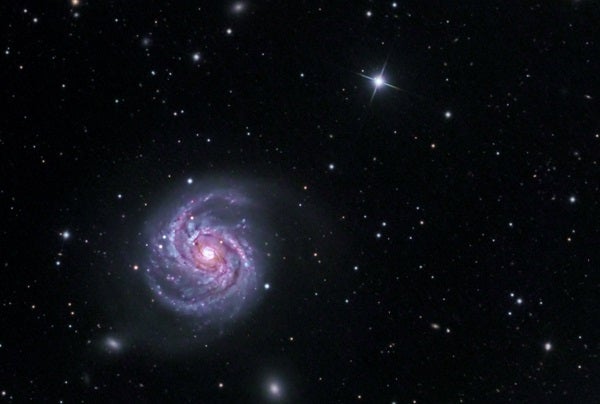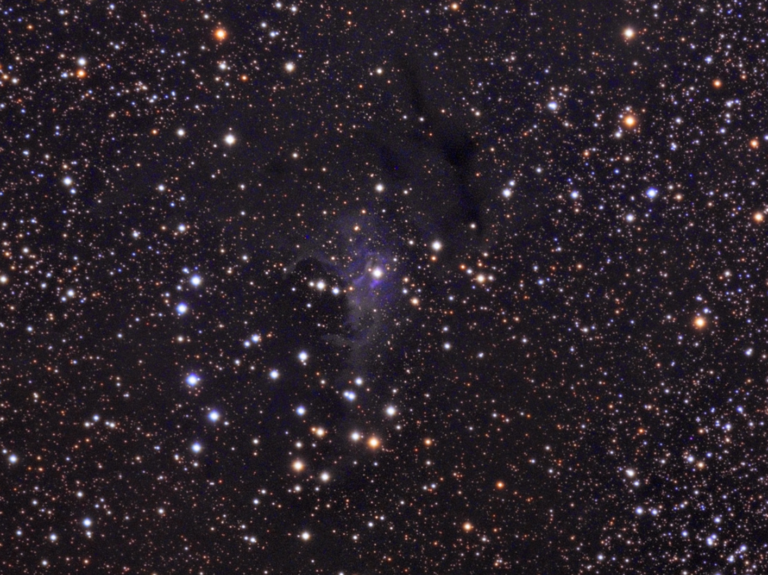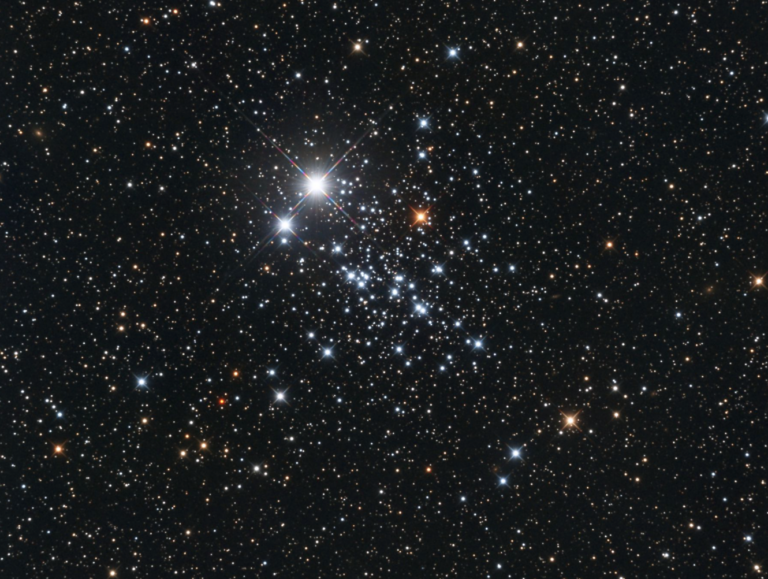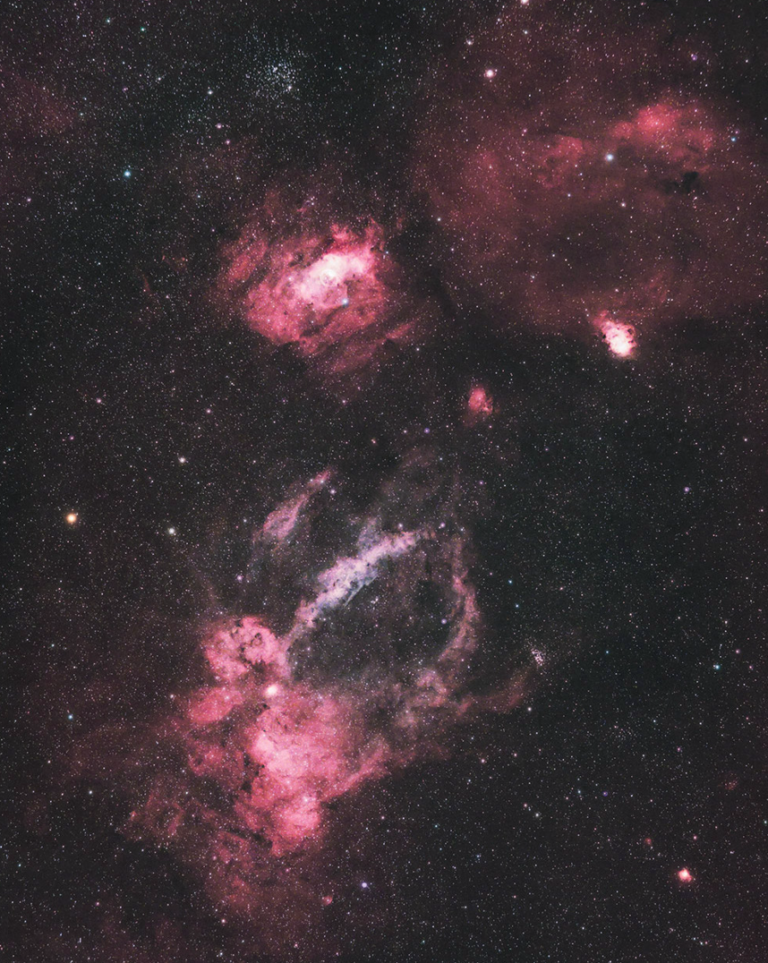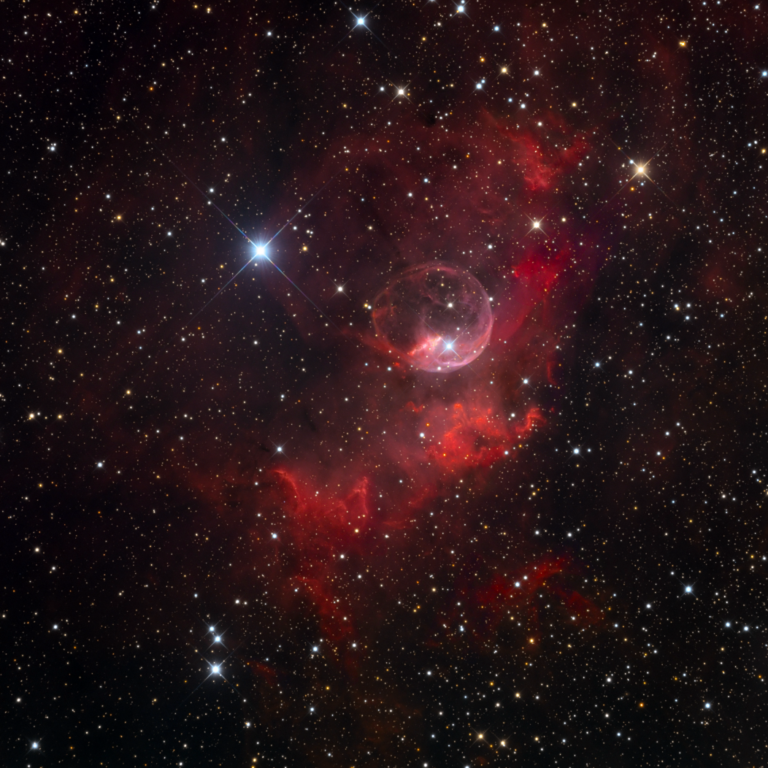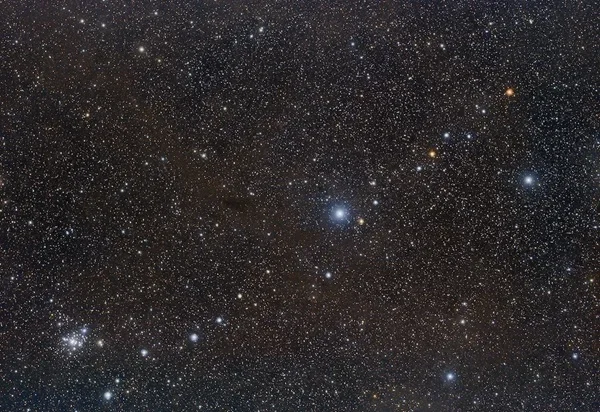Just 2° northeast of 6th-magnitude 6 Comae Berenices is 9th-magnitude M100. Located some 55 million light-years distant, it is the Virgo Cluster’s brightest spiral galaxy. The galaxy was another find in 1781 by French comet hunter Pierre Méchain, who notified his comet companion Charles Messier. Like M98 and M99, Messier found it difficult to detect, possible “only under great conditions, and near meridian passage.”
One can only imagine their reaction had they lived today to see this face-on spiral galaxy — comprised of some 400 billion suns spread across 100,000 light-years of space — in all its glory. M100 is a grand-design spiral and, like M51, displays two prominent, well-defined spiral arms (and several fainter ones) that uncoil from the ends of a central bar like a whirligig.
Infrared images show the galaxy’s arms sweeping out from a prominent ring of hot, bright dust (an area of intense star formation) that surrounds the inner galactic core. Episodes of starburst activity have been occurring in this ring for the past 500 million years. The arms show a slight asymmetry (being brighter toward the south) and gradually become cooler as they recede from the core.
M100 is a challenging object to observe through a small telescope, mainly because its light is spread across 6′ of sky — almost twice the extent of the Owl Nebula, which is a full magnitude brighter! Even using high magnification, look for a pale orb with a soft core and no central starlike nucleus. Spend some time behind the eyepiece, though, and sweep your eye across the galaxy’s face to see if you can pick up hints of spiral enhancement. Supernova hunters should be aware that M100 has produced seven supernovae between 1901 and 2020.
Make sure to explore Astronomy’s full list of 101 cosmic objects you must see. New entries will be added each week throughout 2022.
To get the latest astronomical news and observing content delivered directly to your door, subscribe to Astronomy magazine today!

